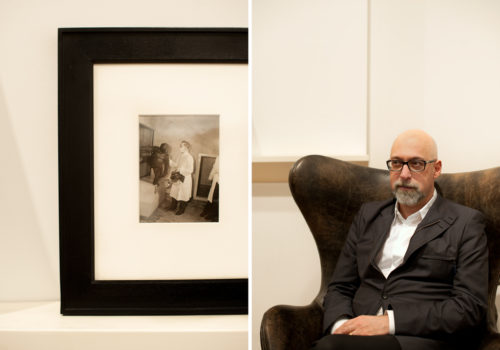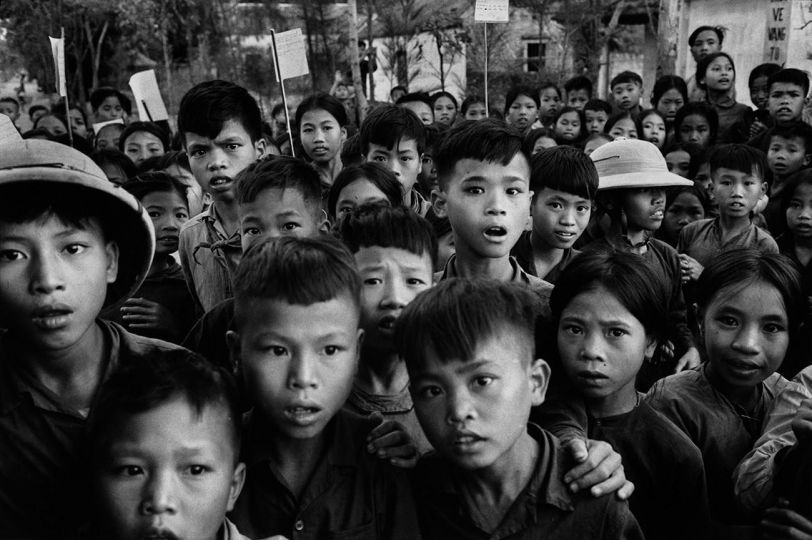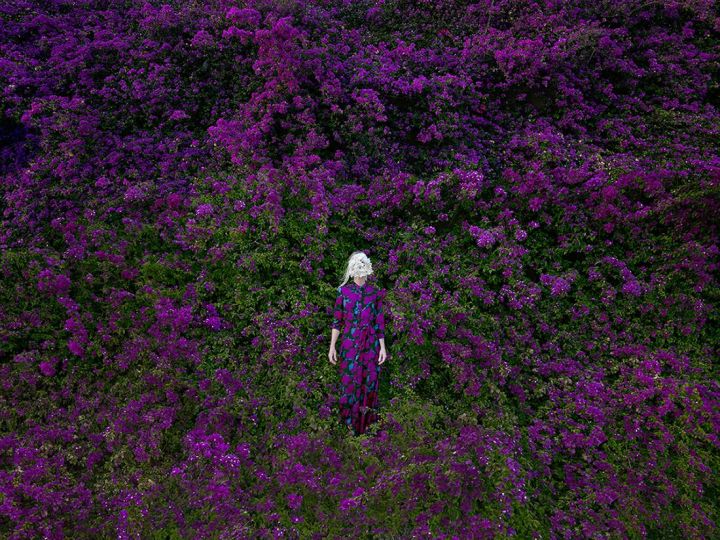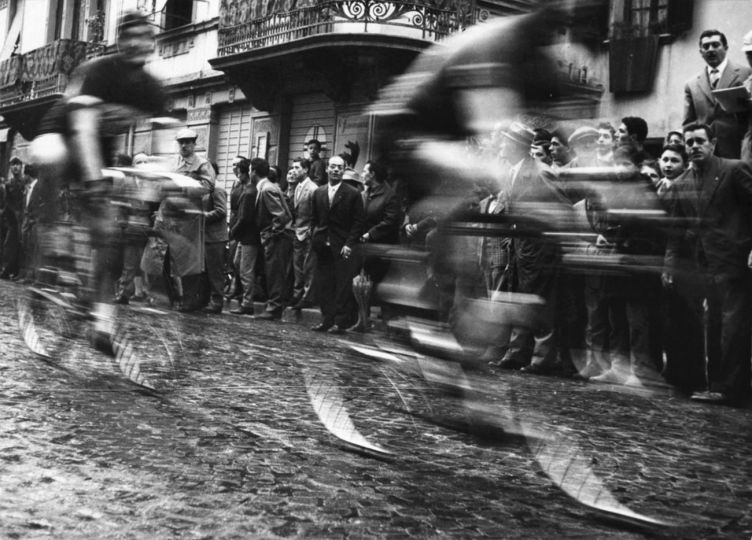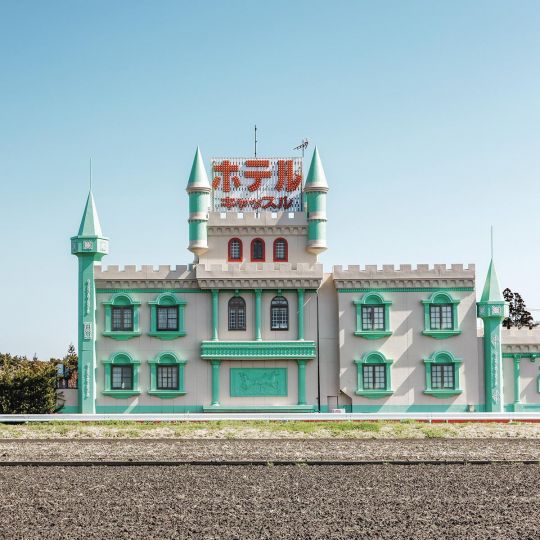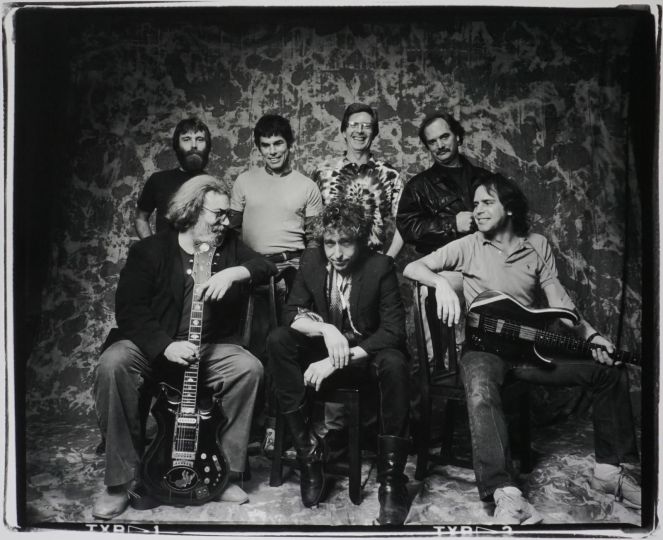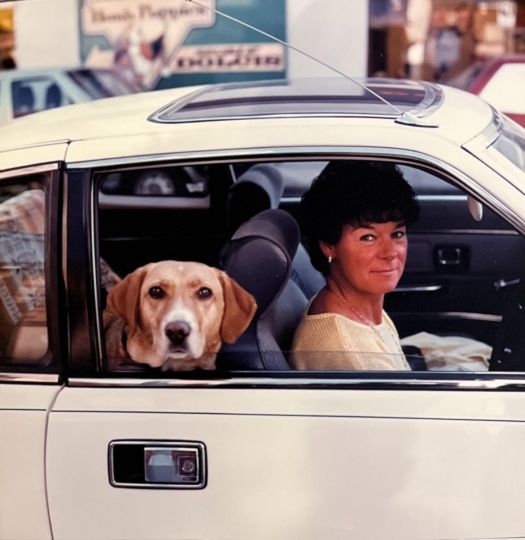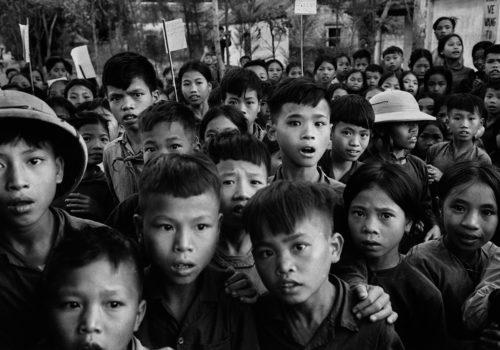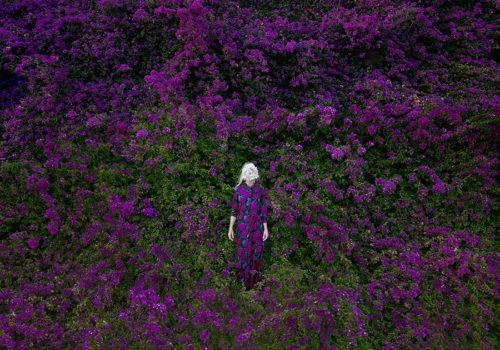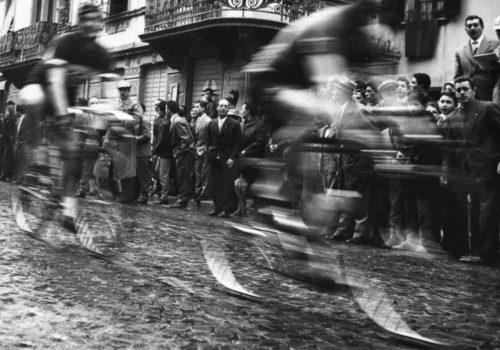Day 4
It’s the middle of the afternoon when I leave the International Center of Photography, where I teach a digital course. I’m meeting Steven Kasher at his Chelsea gallery. He’s exhibiting two black-and-white series of amazing silver prints by Weegee and Vivian Mayer.
Culture chock.
I wander if all photographers from my generation feels lucky and at the same time torn to have a foot in both the digital and analogue worlds, as I do.
Steve invites me into a little private room in the back of the gallery. He’s composed, focused, precise. He shows me his favorite photo: the title and artist are unknown, and Steve’s research leads him to believe that it is one of a kind. For Steve, the image is an allegory of institutionalization. It’s about the art of portraiture, but also more profoundly about freedom and modern life.
He says that he takes inspiration from this kind of photograph—one taken for a specific purpose, but that ends up having a new meaning—while piecing together his gallery’s collection.
The shot is totally absorbing, and Steven and I start to debate how the photographer lit the scene. Fascinating.
While setting up my tripod, I ask: “Steven, I have a question that has nothing to do with the interview: How did you get the Vivian Mayer pictures?”
He smiles and starts to tell me. About his interest in “vernacular” photography since the famous story of Disfarmer. About a friend who mentioned John Maloof’s discovery of Vivian Mayer. About a few low-grade prints he saw at the time, the little bit information he was able to learn about them. And about how his work at the gallery kept him so busy he almost forgot about the project.
A little later he tells me about how Jeffrey Goldstein, who also owns a part of the Mayer collection, brought more works of hers to light. The planning of an exhibition got underway: the selection; the extensive research and the meager results. Viviane worked as a nanny for a rich Chicago family. She was single, with no friends or family of her own. She shot in New York and Chicago, first with a Brownie, then with a Rolleflex. She had an obsession with leaves and newspapers… No text, not a single line, and no witnesses. Only her photos speak for her. Hundreds of thousands of negatives that were never printed, found by chance at a Chicago auction.
As I pack up my equipment, Steven’s words are running through my head: “She was probably a strong character with not a lot of humor. She did photography because she loved it, and she was very pure in that way. She was shooting for herself, following her intuition; she didn’t communicate with anyone. But she saved it all, so maybe she did think someone would see it someday…”
That same morning I was telling my students at the ICP that the sky was grey and low like in Paris. As I left Steven’s gallery, the sun had regained its rightful place in the sky.
No surprise there.
Thank you, Steven.
From his first encounter with photography to the opening of his own
gallery space…
When he was 8 or 10, he developed photos with his father in the family bathroom. He found it “magical.” He stayed with photography as a teenager, but then decided to give it up for painting and sculpture.
Only later, when he began taking pictures of his sculptures, did he get fully involved with photography, building himself a darkroom and taking classes.
He organized exhibitions of his own work, like his Museum of Nazi Art, while continuing his studies and becoming a professor.
Unexpectedly, the photography agency Black Star hired him to help them reach a wider audience. His idea was to use the agency archives to put together a large exhibition celebrating the 30th anniversary of the American civil rights movement. The exhibition, done in collaboration with Howard Greenberg, was an enormous success.
He decided in 1995 to go solo.
His best memory as a gallerist…
He says that most of his memories as a gallerist are related to clients, and therefore confidential.
His worst memory as a gallerist…
Last summer, he participated in an exhibition at Hasted Kraeutler Gallery called Don’t Quit Your Day Job, which featured photos taken by gallerists. Steven showed six portraits—and the critics gave his work rather poor reviews.
The first photograph he bought for himself? Or one that has a special
importance in his life?
He has no recollection of his first photograph, but his favorite photo has no title and was taken by an unknown photographer. It depicts a gorilla facing three men, one of whom is holding a camera.
On his bedroom wall…
A print by Julia Margaret Cameron
A print by Irvin Penn (a compromise with his wife)
If he could only have one—and if he could obtain it—Albino Sword Swallower at a Carnival by Diane Arbus
If he was a renowned photographer…
Edward Weston for his focus and the intensity of his work.
Robert Frank during his work on The Americans
And perhaps Weegee, who had the unique gift of treating all of his subjects equally.

